I have a compiled a dataframe that contains USGS streamflow data at several different streamgages. Now I want to create a Gantt chart similar to this. Currently, my data has columns as site names and a date index as rows.
Here is a sample of my data.
The problem with the Gantt chart example I linked is that my data has gaps between the start and end dates that would normally define the horizontal time-lines. Many of the examples I found only account for the start and end date, but not missing values that may be in between. How do I account for the gaps where there is no data (blanks or nan in those slots for values) for some of the sites?
First, I have a plot that shows where the missing data is.
import missingno as msno
msno.bar(dfp)
Now, I want time on the x-axis and a horizontal line on the y-axis that tracks when the sites contain data at those times. I know how to do this the brute force way, which would mean manually picking out the start and end dates where there is valid data (which I made up below).
from datetime import datetime
import pandas as pd
import matplotlib.pyplot as plt
import matplotlib.dates as dt
df=[('RIO GRANDE AT EMBUDO, NM','2015-7-22','2015-12-7'),
('RIO GRANDE AT EMBUDO, NM','2016-1-22','2016-8-5'),
('RIO GRANDE DEL RANCHO NEAR TALPA, NM','2014-12-10','2015-12-14'),
('RIO GRANDE DEL RANCHO NEAR TALPA, NM','2017-1-10','2017-11-25'),
('RIO GRANDE AT OTOWI BRIDGE, NM','2015-8-17','2017-8-21'),
('RIO GRANDE BLW TAOS JUNCTION BRIDGE NEAR TAOS, NM','2015-9-1','2016-6-1'),
('RIO GRANDE NEAR CERRO, NM','2016-1-2','2016-3-15'),
]
df=pd.DataFrame(data=df)
df.columns = ['A', 'Beg', 'End']
df['Beg'] = pd.to_datetime(df['Beg'])
df['End'] = pd.to_datetime(df['End'])
fig = plt.figure(figsize=(10,8))
ax = fig.add_subplot(111)
ax = ax.xaxis_date()
ax = plt.hlines(df['A'], dt.date2num(df['Beg']), dt.date2num(df['End']))
How do I make a figure (like the one shown above) with the dataframe I provided as an example? Ideally I want to avoid the brute force method.
Please note: values of zero are considered valid data points.
Thank you in advance for your feedback!



